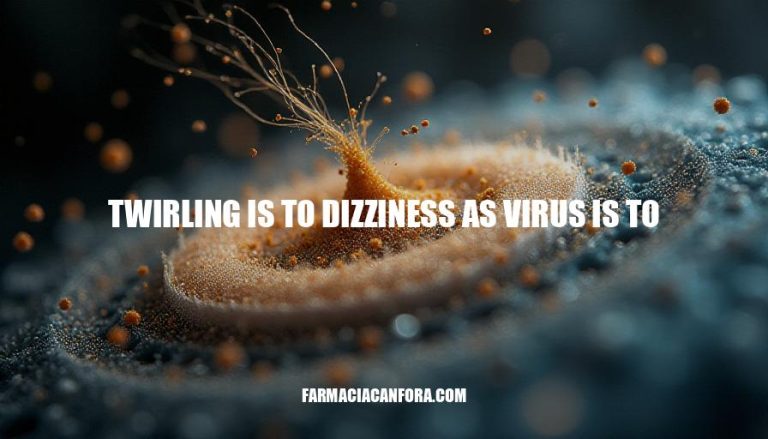


When you spin around, your inner ear gets confused. The fluid inside your semicircular canals gets all mixed up, making you feel dizzy. It’s a direct cause-and-effect situation – spinning makes you lose balance.
Viral infections work in a similar way. A virus enters your body and triggers specific reactions like an immune response or inflammation. Your cells change because of the virus, just like your inner ear changes when you spin around.
In both cases, something starts a chain reaction that leads to a specific outcome. This shows us how things can be connected in different ways – from physical movements to biological systems.
Twirling triggers dizziness through a disturbance of the vestibular system within the inner ear. The vestibular apparatus, consisting of three semicircular canals filled with fluid, senses rotational motion. When you spin, the fluid inside these canals moves due to inertia.
Upon stopping, the fluid continues to move briefly, sending mixed signals to the brain about body orientation. These conflicting sensory inputs—visual, proprioceptive, and vestibular—overload the brain’s integrative capacity, creating the sensation of dizziness, or vertigo. It is a direct, physical interplay between rotational motion and the nervous system’s ability to stabilize equilibrium.
Analogously, a virus induces illness by hijacking host cellular mechanisms.
Upon entering a host cell, the virus attaches to specific receptors and releases its genetic material, either DNA or RNA. This material commandeers the host cell’s machinery, redirecting resources to produce viral components rather than the cell’s normal functions. The result is cellular damage, lysis, or impaired function.
The immune system, while attempting to contain the invasion, may contribute to symptoms through inflammation and fever. The disruption at the cellular level cascades to tissue, organ, and systemic dysfunction, manifesting as illness.
The causative connection—whether between mechanical spinning and sensory overload or viral invasion and cellular sabotage—highlights a universal principle: external forces, whether physical or biological, exert their influence by destabilizing systems designed to maintain balance. These relationships serve as microcosms of broader patterns in nature, where perturbation of equilibrium often leads to disruption, whether in the human body, ecosystems, or even social dynamics.
Each analogy underscores the interconnectedness of stimuli and responses across vastly different scales and contexts.
The analysis of “twirling is to dizziness as virus is to” reveals a profound insight into cause-and-effect relationships. By examining the physical phenomenon of spinning and its effect on the vestibular system, we gain a deeper understanding of how external forces can disrupt systems designed to maintain balance.
This analogy highlights the universal principle that external influences, whether physical or biological, exert their impact by destabilizing equilibrium. In both cases, a disturbance triggers a chain reaction that leads to a specific outcome. The spinning motion causes sensory overload, while the virus hijacks host cellular mechanisms, leading to illness.
The significance of this comparison lies in its ability to illustrate the interconnectedness of stimuli and responses across different scales and contexts. By recognizing these patterns, we can gain a deeper comprehension of phenomena and appreciate the simplicity yet depth of such analogies.
This analogy serves as a microcosm for broader patterns in nature, where perturbation of equilibrium often leads to disruption. Whether in the human body, ecosystems, or social dynamics, understanding these relationships is crucial for grasping the underlying mechanisms that govern complex systems.